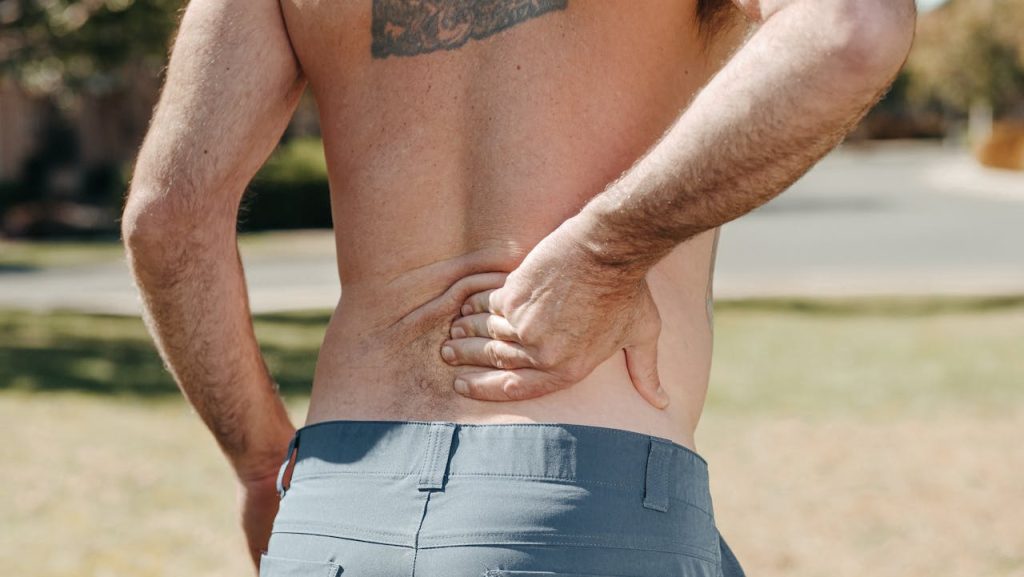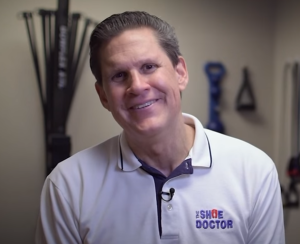Discover the surprising connection between foot support and finding relief from hip pain. Uncover how proper footwear, exercises, stretches, and hip OA interventions can alleviate discomfort and enhance mobility, contrasting with the limitations imposed by inadequate support. By delving into this link, you can take proactive steps towards improving your overall well-being. Stay tuned to explore how a simple adjustment in your footwear choices could make a significant difference in addressing hip pain issues effectively.
Understanding the Link Between Hip and Knee Pain
Foot Arch Support
The foot arch plays a crucial role in maintaining proper alignment of the lower body. When the arch collapses, it can lead to hip and knee pain due to misalignment. Utilizing orthotic inserts can provide adequate support to the foot arch, thereby alleviating pressure on the hips.
Shoe Selection
Choosing the right footwear is essential in preventing hip and knee pain. Opt for shoes with sufficient cushioning and arch support to reduce the impact on these joints during daily activities, especially if you experience foot pain or hip OA. Orthopedic shoes are specifically designed to promote proper alignment and support for individuals experiencing hip discomfort and foot pain.
Gait Analysis
Conducting a gait analysis can offer valuable insights into how your feet strike the ground while walking or running. An abnormal gait pattern can contribute to hip and knee issues, highlighting the importance of addressing any irregularities through customized orthotic interventions, exercises, and stretches.
Physical Therapy
Engaging in targeted physical therapy exercises can strengthen the muscles surrounding the hips and knees, providing enhanced stability and support. These exercises, including stretches, help improve joint mobility and reduce the risk of further discomfort associated with poor alignment.
Weight Management
Maintaining a healthy weight is essential in managing hip and knee pain through exercises and stretches. Excess weight places additional stress on these joints, leading to increased discomfort and foot pain. By adopting a balanced diet and incorporating regular exercise, individuals can effectively reduce the burden on their hips and knees.
Proper Posture
Maintaining good posture is key to minimizing strain on the hips and knees. Slouching or standing with improper alignment can exacerbate existing pain. By practicing proper posture techniques, such as keeping the shoulders back and aligning the ears with the shoulders, individuals can alleviate pressure on these joints.
Common Causes of Hip and Knee Pain
Osteoarthritis
Osteoarthritis is a common condition contributing to hip pain. It occurs when the protective cartilage on the ends of bones wears down over time, leading to pain, stiffness, and swelling in the affected joint. This degenerative condition can affect the hip joint, causing discomfort and reduced mobility.
Bursitis
Bursitis is another prevalent cause of hip pain severity. It involves inflammation of the bursae, small fluid-filled sacs that cushion the bones, tendons, and muscles near joints. When the bursae become inflamed, it can result in painful knee and hip symptoms, limiting movement and causing discomfort due to bursitis.
Lifestyle Factors
Obesity and sedentary behavior can significantly impact hip health. Excess weight puts added stress on the hip joints, leading to increased wear and tear over time. Moreover, a lack of physical activity can weaken the muscles supporting the hips, exacerbating pain intensity and discomfort.
Injuries and Overuse
Injuries or overuse of the hip joint can result in chronic hip pain. For instance, a sudden fall or impact can damage the structures within the hip, leading to persistent discomfort. Similarly, repetitive movements or strenuous activities can strain the hip joint, causing worsening knee pain and affecting overall mobility.
The Connection Between Foot Support and Hip Pain
Foot Mechanics
Improper foot mechanics can worsen hip pain symptoms by causing misalignment in the lower body. When the feet lack proper support, it can lead to overpronation or supination, affecting the entire kinetic chain.
Supporting Research:
- Studies have shown that individuals with shin splints or achilles tendon issues often experience secondary hip pain due to altered gait patterns caused by poor foot mechanics.
Hip Osteoarthritis
The severity of hip osteoarthritis can be influenced by underlying foot pain conditions. As the body compensates for foot symptoms and discomfort in the feet, it can put additional stress on the hips, exacerbating existing issues.
Foot Support Benefits
Providing adequate foot support through orthotic devices or proper footwear has been shown to enhance hip function and alleviate pain. By correcting biomechanical imbalances in the feet, individuals can experience improved mobility and reduced discomfort in the hips.
Key Benefits:
- Enhanced stability and alignment from foot support can alleviate pressure on the hips, promoting better posture and reducing the risk of injury.
- Improved shock absorption through supportive footwear can prevent excessive impact on the affected joint, leading to decreased stiffness and increased comfort during movement.
How Hip Pain Is Diagnosed
Medical Examination
During a medical examination, healthcare providers will assess the patient’s medical history and conduct a physical examination. They may inquire about the nature of the pain, its duration, and any activities that worsen or alleviate the symptoms.
Hip pain diagnosis often involves imaging tests such as X-rays, MRI scans, or CT scans. These tests help identify issues like fractures, arthritis, or structural abnormalities in the hip joint.
Differential Diagnosis
Differential diagnosis is crucial in ruling out other potential causes of hip pain. Conditions like sciatica, bursitis, or referred pain from the lower back can manifest as hip discomfort.
Healthcare professionals may also perform joint injections to determine the source of pain accurately. By injecting anesthetic into specific areas around the hip joint, they can pinpoint the origin of the pain.
Laboratory Tests
In some cases, laboratory tests such as blood tests are conducted to check for signs of inflammation or infection. Elevated levels of certain markers can indicate conditions like rheumatoid arthritis or osteoarthritis.
To further evaluate hip pain, doctors may recommend arthroscopy, a minimally invasive procedure where a small camera is inserted into the hip joint. This allows for direct visualization of any abnormalities within the joint.
Implications for Diagnosis
Link Analysis
Foot support plays a crucial role in alleviating hip pain by maintaining proper alignment throughout the body. When diagnosing hip pain, healthcare professionals often analyze the relationship between foot mechanics and hip function.
Importance of Footwear
The type of footwear worn can significantly impact hip health. Supportive shoes with proper arch support can help distribute weight evenly, reducing strain on the hips.
Gait Examination
During a diagnosis, experts may conduct a gait analysis to assess how an individual walks. This examination provides insights into potential issues with foot mechanics that could be contributing to hip discomfort.
Orthotic Consideration
Orthotics, such as shoe inserts or custom orthopedic devices, are commonly recommended to provide additional foot support. These aids can help address underlying foot problems that may be linked to hip pain.
Biomechanics of Foot and Hip Alignment
Clinical Biomechanics
Orthopedic evaluation often involves clinical biomechanics to assess how the body’s structure and function affect movement patterns. In the context of foot and hip alignment, understanding biomechanical mechanisms is crucial.
Kinetic Chain
The kinetic chain refers to the interconnection of joints and muscles during movement. In the case of foot and hip interactions, the kinetic chain plays a vital role in maintaining proper alignment and function.
Foot Positioning Impact:
- Proper foot positioning can help maintain knee alignment and reduce stress on the hips.
- Misalignment in the feet can lead to increased knee adduction moment, impacting hip joint alignment during activities.
Compensatory Patterns
Misalignments in the feet can result in compensatory posture changes in the hips. The body adapts to poor foot positioning by altering musculoskeletal function, potentially leading to hip pain and discomfort.
Key Points:
- Ankle and foot postures influence the way forces are transmitted through the lower extremities, affecting hip joint stability.
- Sports medicine physicians often consider musculoskeletal care when addressing issues related to foot and hip alignment.
Prevention & Treatment
Foot Support Importance
Foot support plays a crucial role in maintaining proper alignment between the feet and hips. It helps distribute weight evenly.
Supportive footwear with arch support can alleviate pressure on the hips, reducing the risk of pain.
Orthotic Insoles Benefits
Orthotic insoles are custom-made shoe inserts designed to provide additional support for the feet. They can help correct alignment issues.
These insoles can improve foot arch structure, leading to better hip alignment and reduced pain.
Stretching Exercises
Engaging in regular stretching exercises can improve flexibility in the feet and hips. This can prevent stiffness and discomfort.
Simple stretches like calf stretches and hip flexor stretches can reduce tension in these areas, promoting better alignment.
Footwear Considerations
Choosing the right footwear is essential for hip pain prevention. Opt for shoes with adequate cushioning and arch support.
Avoid high heels and unsupportive footwear, as they can exacerbate alignment issues and lead to hip pain.

How Foot Support Alleviates Hip Pain
Proper Alignment
Foot support plays a crucial role in aligning the body, which can directly impact hip pain. When the feet are properly supported, it helps maintain the correct alignment of the hips.
Supportive footwear or orthotic inserts can correct issues like overpronation or supination, which can lead to hip misalignment and subsequent pain.
Shock Absorption
One key way foot support alleviates hip pain is through effective shock absorption. With each step, the feet absorb the impact, reducing the stress transmitted to the hips.
Quality footwear with adequate cushioning and arch support can significantly reduce the impact on the hips, providing relief from pain and discomfort.
Muscle Engagement
Foot support encourages proper muscle engagement throughout the lower body, including the hips. By providing a stable foundation, supportive shoes help distribute weight evenly and reduce strain on the hip muscles.
When the feet are well-supported, it promotes balanced muscle activation, preventing excessive stress on specific areas like the hips.
Exercises to Improve Foot and Hip Health
Strengthening Exercises
Engage in strengthening exercises that target the muscles supporting the hip joints and foot health. These exercises can include hip abduction, hip extension, and calf raises. By strengthening these muscles, you can improve overall stability and reduce the risk of injuries.
Perform hip abduction exercises by lying on your side and lifting your top leg upward. This movement targets the muscles on the outer part of your hip, enhancing support for the joint. Incorporate calf raises into your routine to strengthen the muscles in your lower legs, providing better support for your feet during physical activities.
Flexibility and Balance Workouts
Incorporate flexibility and balance workouts into your routine to enhance joint mobility and prevent injuries. Focus on stretching exercises that target the muscles around the hips and feet, such as hamstring stretches and ankle circles. These exercises help maintain range of motion and reduce stiffness in the joints.
Practice ankle circles by sitting comfortably and rotating your ankles in circular motions. This exercise improves ankle flexibility, which is crucial for maintaining proper foot alignment and preventing issues like plantar fasciitis. Moreover, include hamstring stretches to promote flexibility in the muscles supporting your hips, reducing the strain on the joints during physical activities.
Importance of Regular Physical Activity
Regular physical activity plays a vital role in maintaining joint health and preventing musculoskeletal issues. Engaging in activities like walking, swimming, or cycling helps improve blood flow to the joints, promoting healing and reducing inflammation. Aim for at least 150 minutes of moderate-intensity exercise per week to support overall limb health.
Expert Recommendations and Tips
Healthcare Insights
Healthcare professionals recommend regular assessments of foot and hip health to identify issues early on. By doing so, individuals can address potential problems before they escalate.
Seeking advice from a therapist specialized in musculoskeletal conditions can provide valuable insights into managing foot and hip pain effectively. These experts can offer personalized recommendations based on individual needs.
Practical Tips
Incorporating supportive footwear into daily routines is crucial for maintaining proper foot alignment and reducing strain on the hips. Opt for shoes with adequate arch support and cushioning.
Foot exercises, such as toe curls and ankle rotations, can help strengthen the muscles that support the feet and improve overall stability. These simple exercises can be easily integrated into daily routines.
Preventive Measures
Regularly stretching the calf muscles can alleviate tension on the feet and hips, promoting flexibility and reducing the risk of discomfort. Simple stretches like calf raises can be beneficial.
Maintaining a healthy weight through balanced nutrition and regular exercise is essential for reducing the pressure on the feet and hips. Excess weight can exacerbate existing pain and lead to further complications.
Importance of Foot Care
Proper foot hygiene is crucial for preventing infections and maintaining overall foot health. Wash your feet daily, dry them thoroughly, and moisturize to prevent dryness and cracking.
Elevating the feet at the end of the day can help reduce swelling and alleviate pressure on the hips. Incorporating this simple practice into your routine can promote circulation and relieve discomfort.
Summary
In understanding the link between foot support and hip pain relief, you’ve delved into the intricate relationship between these body parts. By recognizing common causes of hip and knee pain, you can now appreciate the significance of proper foot alignment in alleviating discomfort. The biomechanics of foot and hip alignment have shed light on preventive measures and treatments to enhance your overall well-being. Expert recommendations and exercises provided offer actionable steps to improve your foot and hip health. Embrace these insights to proactively address any discomfort or pain you may be experiencing, ensuring a healthier and more comfortable future.
Frequently Asked Questions
What is the relationship between foot support and hip pain relief in musculoskeletal health?
Foot support plays a crucial role in hip pain relief by ensuring proper alignment and reducing stress on the hips. Properly supported feet help maintain correct posture, which can alleviate hip pain and improve overall comfort.
How can foot support impact the biomechanics of hip and knee alignment?
Foot support influences the alignment of the entire lower body, including the hips and knees. By providing adequate support to the feet, it helps maintain proper alignment, reducing strain on the hips and knees, which can lead to pain relief and improved mobility.
What are some common causes of hip and knee pain, such as shin splints, tendon problems, and exercises, addressed in the blog post?
The blog discusses various common causes of hip and knee pain, such as overuse injuries, arthritis, poor posture, and misalignment. Understanding these factors can help individuals identify potential triggers for their discomfort and take preventive measures.
How does foot support alleviate hip pain according to expert recommendations?
Experts recommend using orthotic inserts or supportive footwear to provide stability and cushioning to the feet. This helps distribute weight evenly, reduce pressure on the hips, and promote better alignment, ultimately leading to decreased hip pain and improved mobility.
Are there specific exercises, stretches, mentioned in the blog post to enhance foot and hip health, knee alignment?
The blog outlines exercises aimed at strengthening the muscles supporting the feet, hips, and knees. These exercises can improve stability, flexibility, and range of motion in these areas, contributing to better overall foot and hip health while potentially reducing pain and discomfort.
Alleviate Hip Pain with Custom Orthotics from The Shoe Doctor!
Are you struggling with hip pain that affects your daily life? Proper foot support is crucial, and custom orthotics designed specifically for you can be the solution. These personalized orthotics not only help reduce hip pain but also improve your posture and overall well-being.
At The Shoe Doctor, we bring over twenty years of expertise in crafting custom orthotics tailored to individual needs, including hip pain relief. Our mission is to provide orthotics that alleviate discomfort, offer essential support, and enhance stability in every step you take.
Russell, our dedicated specialist, ensures that your orthotics are perfectly fitted to your feet using precise 3D foot mappings and state-of-the-art technology. By partnering with the Spine & Injury Medical Center in San Jose, California, we adopt a holistic approach to address hip pain challenges.
Ready to find relief? If you’re in the South San Francisco Bay Area, The Shoe Doctor is your go-to destination for custom orthotics designed to alleviate hip pain and improve your quality of life. Begin your journey to pain relief with a complimentary initial consultation.
Don’t wait—schedule your consultation today and experience the benefits of custom orthotics with The Shoe Doctor!
Disclaimer
The materials available on this website are for informational and entertainment purposes only and not to provide medical advice. You should contact your doctor to obtain advice concerning any particular issue or problem. You should not act or refrain from acting based on any content included in this site without seeking medical or other professional advice. The information presented on this website may not reflect the most current medical developments. No action should be taken in reliance on the information contained on this website and we disclaim all liability for actions taken or not taken based on any or all of the contents of this site to the fullest extent permitted by law.


